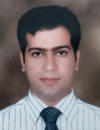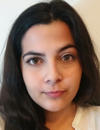| Wednesday, September 20 | |||||||||||||||||||||||||||||||||||||||||||||||||
| 17:30 | |||||||||||||||||||||||||||||||||||||||||||||||||
|
Claudia Prediger
CAST e.V.

|
BIOSIG registration
|
||||||||||||||||||||||||||||||||||||||||||||||||
| 19:30 | |||||||||||||||||||||||||||||||||||||||||||||||||
|
-
|
EAB Award ceremony and BIOSIG welcome reception
|
||||||||||||||||||||||||||||||||||||||||||||||||
Thursday, September 21 BIOSIG - MAIN CONFERENCE - |
|||||||||||||||||||||||||||||||||||||||||||||||||
| 10:00 | |||||||||||||||||||||||||||||||||||||||||||||||||
|
Christoph Busch
Hochschule Darmstadt

|
BIOSIG Conference Opening
|
||||||||||||||||||||||||||||||||||||||||||||||||
| 10:10 | |||||||||||||||||||||||||||||||||||||||||||||||||
|
Ciaran Carolan
eu-LISA

|
KEYNOTE
Biometrics, interoperability and large-scale IT systems: the Future of EU Smart Borders
Border management procedures worldwide are increasingly reliant on technologies and digital systems. European authorities involved in policy formulation for border control have increasingly looked to IT solutions as they seek appropriate means to deal with increasing flows of travellers at the external borders of the Schengen Area while striving to render border checks more efficient and effective. As part of the European Commissions Smart Borders program, two new large-scale IT systems have been proposed for development. The European Entry Exit System (EES) aims to facilitate secure border passage through the use of biometrics and self-service technologies. The European Travel Information Authorisation System (ETIAS), meanwhile, will allow collection of data for risk assessment in advance of travel. The new systems complement those already in place, with interoperability between systems to improve service efficiency and the effectiveness of system usage a relatively new area of interest. The latest developments in the expansion of IT systems at European borders will be described in the presentation. Updates will be provided on eu-LISA-led studies on system development and interoperability concepts. The information will provide the basis for a depiction of the future of IT-led border management encompassing advance passenger authorization as well as checks at borders and involving a variety of actors including border guards, customs authorities, consular authorities, travel agents and carriers and of course travellers.
CAST Members can download the documents here.
|
||||||||||||||||||||||||||||||||||||||||||||||||
| 10:50 | |||||||||||||||||||||||||||||||||||||||||||||||||
|
Gabriel Emile Hine
Roma Tre University

|
Resting-state EEG
A Study on its non-Stationarity for Biometric Applications
CAST Members can download the documents here.
|
||||||||||||||||||||||||||||||||||||||||||||||||
| 11:20 | Break | ||||||||||||||||||||||||||||||||||||||||||||||||
| 11:55 | |||||||||||||||||||||||||||||||||||||||||||||||||
|
Aske Rasch Lejbølle
Aalborg University

|
Multimodal Neural Network for Overhead Person Re-identification
CAST Members can download the documents here.
|
||||||||||||||||||||||||||||||||||||||||||||||||
| 12:25 | |||||||||||||||||||||||||||||||||||||||||||||||||
|
Nanang Susyanto
Universitas Gadjah Mada

|
Pool Adjacent Violators Based Biometric Rank Level Fusion
CAST Members can download the documents here.
|
||||||||||||||||||||||||||||||||||||||||||||||||
| 12:55 | Lunch-Break | ||||||||||||||||||||||||||||||||||||||||||||||||
| 14:05 | |||||||||||||||||||||||||||||||||||||||||||||||||
|
Christian Rathgeb
Hochschule Darmstadt

|
Improvement of Iris Recognition based on Iris-Code Bit-Error Pattern Analysis
CAST Members can download the documents here.
|
||||||||||||||||||||||||||||||||||||||||||||||||
| 14:35 | |||||||||||||||||||||||||||||||||||||||||||||||||
|
Ehsaneddin Jalilian
University of Salzburg

|
Domain Adaptation for CNN Based Iris Segmentation
CAST Members can download the documents here.
|
||||||||||||||||||||||||||||||||||||||||||||||||
| 15:05 | |||||||||||||||||||||||||||||||||||||||||||||||||
|
Pawel Drozdowski
Hochschule Darmstadt

|
SIC-Gen: A Synthetic Iris-Code Generator
CAST Members can download the documents here.
|
||||||||||||||||||||||||||||||||||||||||||||||||
| 15:35 | Break | ||||||||||||||||||||||||||||||||||||||||||||||||
| 16:10 | |||||||||||||||||||||||||||||||||||||||||||||||||
|
Johannes Merkle
secunet

|
xT ARP
Improving the T ented Arch Reference Point Detection Algorithm
CAST Members can download the documents here.
|
||||||||||||||||||||||||||||||||||||||||||||||||
| 16:40 | |||||||||||||||||||||||||||||||||||||||||||||||||
|
Simon Kirchgasser
University of Salzburg

|
Fingerprint T emplate Ageing vs. T emplate Changes Revisited
CAST Members can download the documents here.
|
||||||||||||||||||||||||||||||||||||||||||||||||
| 17:10 | |||||||||||||||||||||||||||||||||||||||||||||||||
|
Arslan Brömme
|
Opening Poster Session
|
||||||||||||||||||||||||||||||||||||||||||||||||
| 18:40 | Social Event: Dinner with Barbeque | ||||||||||||||||||||||||||||||||||||||||||||||||
Friday, September 22 |
|||||||||||||||||||||||||||||||||||||||||||||||||
| 09:00 | |||||||||||||||||||||||||||||||||||||||||||||||||
|
Yoshinori Koda
NEC Corporation

|
KEYNOTE
Fingerprinting young newborns - from sensor design to application challenges
The use of the technology for identification has recently expanded due to several innovations in the field. One such expansion is the use of biometrics to create a national ID system as a HUB for several social services. Such a system would be mainly used for history management of issuing social welfare services for citizens, especially for adults. However, additional requirements requested involve development of the ability to register children into the citizenship database. A biometric technology solution makes identification possible because it does not require any input from the child. NEC, a biometric technology pioneer, assigned a technical project team to develop an accurate child print capturing method without the limits prescribed by the various international standards and specifications. This project is in line with the companys corporate philosophy of providing innovative solutions for societys most challenging problems. The purpose of this research is to explain the feasibility of NECs new device with biometric technology and the results from onsite research.
CAST Members can download the documents here.
|
||||||||||||||||||||||||||||||||||||||||||||||||
| 09:40 | |||||||||||||||||||||||||||||||||||||||||||||||||
|
Vanina Camacho
Universidad de la República

|
Recognizing infants and toddlers over an on-production fingerprint database
CAST Members can download the documents here.
|
||||||||||||||||||||||||||||||||||||||||||||||||
| 10:10 | |||||||||||||||||||||||||||||||||||||||||||||||||
|
Tarang Chugh
Michigan State University

|
Benchmarking Fingerprint Minutiae Extractors
CAST Members can download the documents here.
|
||||||||||||||||||||||||||||||||||||||||||||||||
| 10:40 | Break | ||||||||||||||||||||||||||||||||||||||||||||||||
| 11:15 | |||||||||||||||||||||||||||||||||||||||||||||||||
|
Luuk Spreeuwers
University of Twente

|
De-duplication using automated face recognition: an accurate mathematical model and all babies are equally cute
CAST Members can download the documents here.
|
||||||||||||||||||||||||||||||||||||||||||||||||
| 11:45 | |||||||||||||||||||||||||||||||||||||||||||||||||
|
Seong Tae Kim
KAIST

|
Multi-scale facial scanning via spatial LSTM for latent facial feature representation
CAST Members can download the documents here.
|
||||||||||||||||||||||||||||||||||||||||||||||||
| 12:15 | |||||||||||||||||||||||||||||||||||||||||||||||||
|
Mehmet Ozgur Turkoglu
University of Twente

|
Texture-Based Eyebrow Recognition
CAST Members can download the documents here.
|
||||||||||||||||||||||||||||||||||||||||||||||||
| 12:45 | Lunch-Break | ||||||||||||||||||||||||||||||||||||||||||||||||
| 13:55 | |||||||||||||||||||||||||||||||||||||||||||||||||
|
Ulrich Scherhag
Hochschule Darmstadt

|
Biometric Systems under Morphing Attacks: Assessment of Morphing Techniques and Vulnerability Reporting
CAST Members can download the documents here.
|
||||||||||||||||||||||||||||||||||||||||||||||||
| 14:25 | |||||||||||||||||||||||||||||||||||||||||||||||||
|
Sushil Bhattacharjee
Idiap Research Institute
|
What you can't see can help you
Extended-range imaging for 3D-mask presentation attack detection
|
||||||||||||||||||||||||||||||||||||||||||||||||
| 14:55 | |||||||||||||||||||||||||||||||||||||||||||||||||
|
Héctor Delgado
EURECOM

|
Impact of bandwidth and channel variation on presentation attack detection for speaker verification
CAST Members can download the documents here.
|
||||||||||||||||||||||||||||||||||||||||||||||||
| 15:25 | Break | ||||||||||||||||||||||||||||||||||||||||||||||||
| 16:00 | |||||||||||||||||||||||||||||||||||||||||||||||||
|
Mark Nixon
University of Southampton

|
KEYNOTE
Soft Biometrics: Identification by Face, Body and Clothing
Soft Biometrics are the estimation or use of personal characteristics describable by humans that can be used to aid or effect person recognition. Soft biometrics are also attributes that are typically gleaned from primary biometric data which are classifiable in pre-defined human understandable categories and can be extracted in an automated manner. These attributes can contribute to recognition or can be estimated separately and this helps to improve or refine biometric systems operation. This leads to soft biometrics which can be used to reinforce conventional biometrics and which can be estimated separately, say to increase biometrics deployment capability. Alternatively, fine grained attributes can be deployed as measures used for identification. Humans can describe the body, the clothing and the face for recognition and, equally, these descriptions can be estimated by computer vision. The new approach is akin with automated eyewitness identification, using information derived by human and automated processes. We therefore have a new approach to identifying humans by using attributes that can be described by people or by automated vision. We are then well on the way to provide a new way for automated identification from surveillance video which is a capability much needed in modern society.
CAST Members can download the documents here.
|
||||||||||||||||||||||||||||||||||||||||||||||||
| 16:40 | |||||||||||||||||||||||||||||||||||||||||||||||||
|
Christoph Busch
Hochschule Darmstadt

|
Awards/ Closing Remarks
|
||||||||||||||||||||||||||||||||||||||||||||||||
If you have any questions please contact:
Christoph Busch
Phone: +49 (0) 6151/16-30090
Email: christoph.busch@cast-forum.de
Simone Zimmermann
CAST e.V.
Tel.: +49 6151 869-230
Email: simone.zimmermann![]() cast-forum.de
cast-forum.de
| ID:SMART 2026 Workshop | 18.-19.02.2026 |
| Recht und IT-Sicherheit | 05.03.2026 |
| 25th International Conference of the Biometrics Special Interest Group (BIOSIG 2026) | 25.-26.11.2026 |